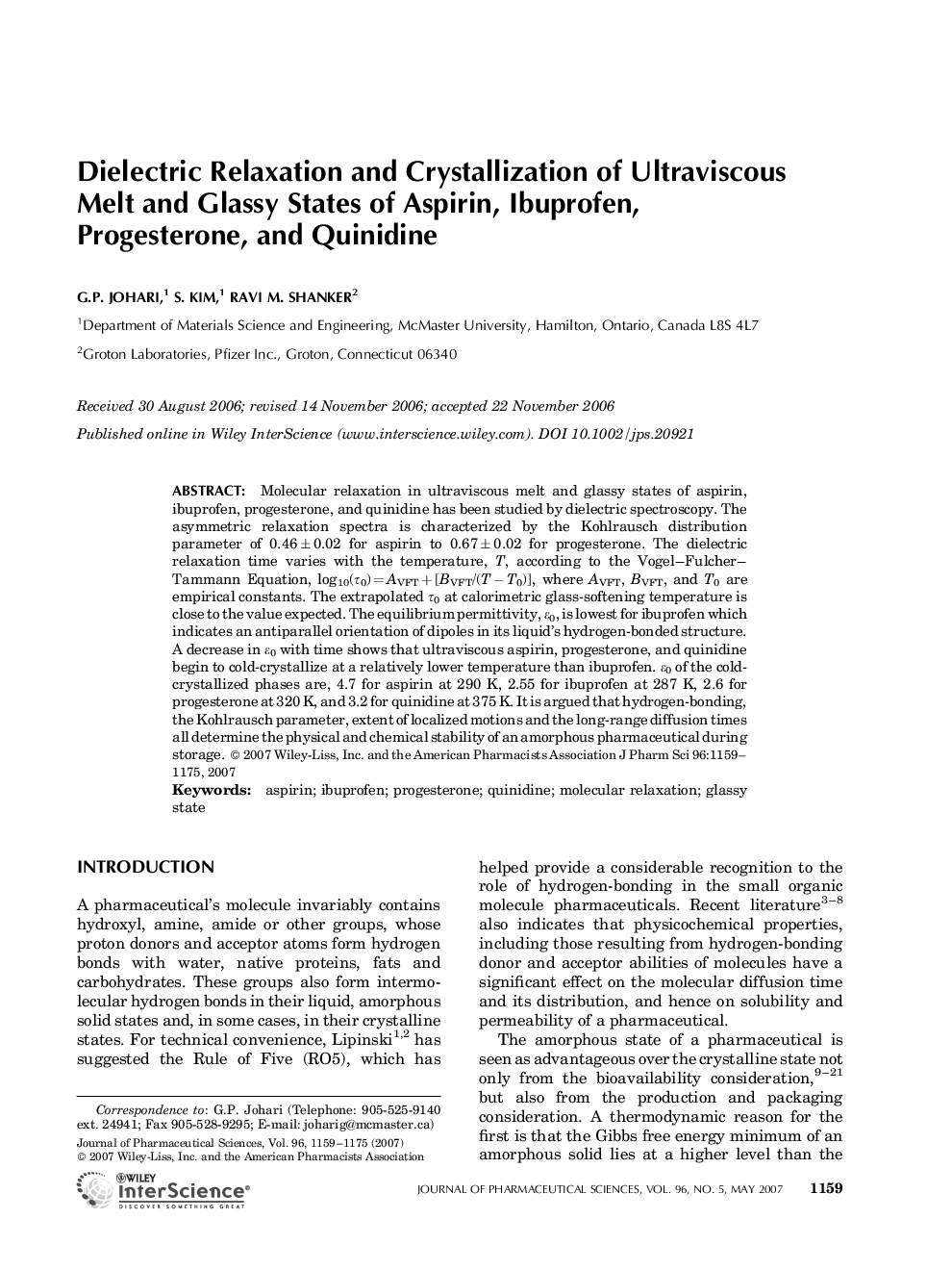| کد مقاله | کد نشریه | سال انتشار | مقاله انگلیسی | نسخه تمام متن |
|---|---|---|---|---|
| 2487692 | 1114428 | 2007 | 17 صفحه PDF | دانلود رایگان |

ABSTRACTMolecular relaxation in ultraviscous melt and glassy states of aspirin, ibuprofen, progesterone, and quinidine has been studied by dielectric spectroscopy. The asymmetric relaxation spectra is characterized by the Kohlrausch distribution parameter of 0.46 ± 0.02 for aspirin to 0.67 ± 0.02 for progesterone. The dielectric relaxation time varies with the temperature, T, according to the Vogel–Fulcher–Tammann Equation, log10(τ0) = AVFT + [BVFT/(T − T0)], where AVFT, BVFT, and T0 are empirical constants. The extrapolated τ0 at calorimetric glass-softening temperature is close to the value expected. The equilibrium permittivity, ε0, is lowest for ibuprofen which indicates an antiparallel orientation of dipoles in its liquid's hydrogen-bonded structure. A decrease in ε0 with time shows that ultraviscous aspirin, progesterone, and quinidine begin to cold-crystallize at a relatively lower temperature than ibuprofen. ε0 of the cold-crystallized phases are, 4.7 for aspirin at 290 K, 2.55 for ibuprofen at 287 K, 2.6 for progesterone at 320 K, and 3.2 for quinidine at 375 K. It is argued that hydrogen-bonding, the Kohlrausch parameter, extent of localized motions and the long-range diffusion times all determine the physical and chemical stability of an amorphous pharmaceutical during storage.
Journal: Journal of Pharmaceutical Sciences - Volume 96, Issue 5, May 2007, Pages 1159–1175